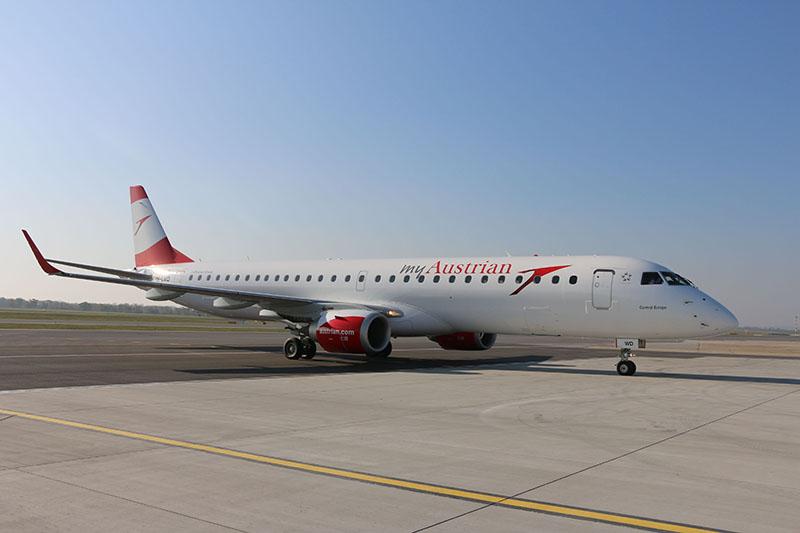
Austrian Airlines’ fleet of Embraer 195s may fly average sector lengths of around one hour, but that figure hides considerable variations in the crossover jet’s operations.
The shortest route served by the aircraft, Vienna-Graz – which typically takes just under two hours by road – is timetabled at 35 minutes, according to Ewald Roithner, the Embraer fleet chief, who is responsible for the 17 aircraft and around 230 pilots.
However, the journey typically takes just 20 minutes and “Under favorable conditions, we fly this route in 18 minutes.”
At the other end of the spectrum, the E195s tackle the route from Vienna to Amman (Jordan) or even Erbil, in Iraqi Kurdistan, which takes around 3h 45mn. The Embraers are scheduled on to that route when passenger loads are low, which was often the case during the pandemic.
The aircraft’s flexibility means that it is often operated in a ‘mix-and-match’ timetable with the airline’s Airbus A320s on busy routes, with the larger European aircraft tackling the busy services at the start and end of the day and the Brazilian twinjet handling quieter rotations in the middle of the day.
“We try to be as flexible as possible,” Roithner said. “For long-term planning purposes, we have fixed routes with the Embraers.” He estimates that 80-90% of the Embraers’ routes are fixed – for example, from Vienna to Venice and Warsaw – and the remaining 10-20% are operated as partners with the A320 fleet.
The aircraft are operated in a 120-seat configuration, with a business-class section that can be extended or shrunk with a moveable curtain, depending on passenger loads.
Routes with higher numbers of business travelers – for example, from Vienna to Munich – may have 12 or 14 seats for premium passengers, whereas there will be none when the aircraft is being used for charter work. As with most European carriers, Austrian operates a typical ‘Eurobusiness’ arrangement, with no difference in seat type or pitch, but with adjacent seats blocked off, to give business passengers more privacy.





